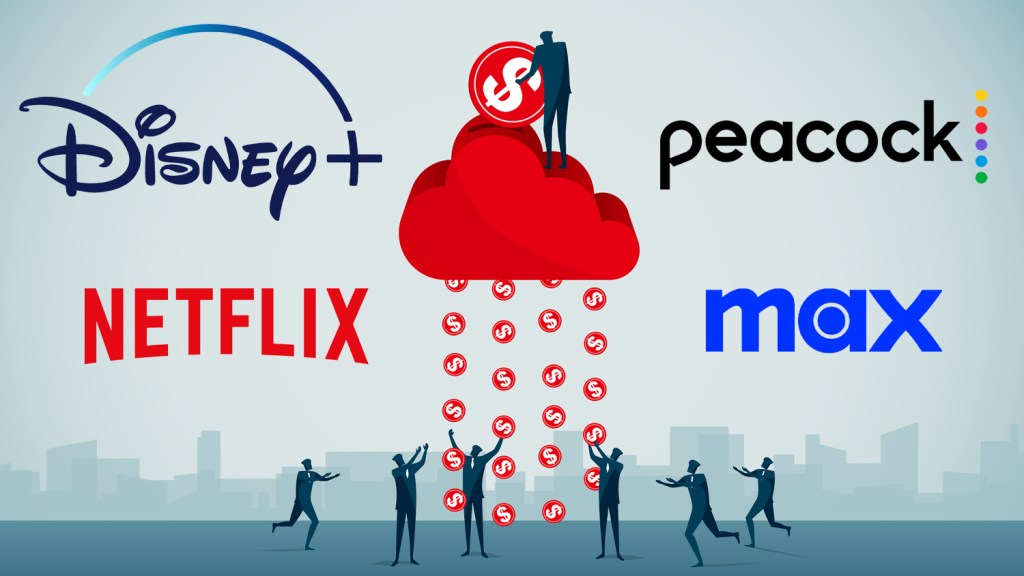The Rise of Streaming Ad Tiers Reshapes U.S. Subscription Landscape
Streaming ad-supported tiers have surged in popularity, now representing nearly 50% of all U.S. subscriptions for services offering them, according to a 2024 Q2 study by Antenna. As major platforms like Netflix, Disney+, and Max pivot toward hybrid models, consumers are increasingly opting for lower-cost plans with commercials—a shift that could redefine the future of subscription video on demand (SVOD).
Why Ad Tiers Are Gaining Momentum
The trend reflects a perfect storm of economic pressures and strategic pivots. With inflation squeezing household budgets, 62% of subscribers now prioritize cost savings over ad-free experiences, per a Deloitte Digital Media Trends survey. Meanwhile, streaming providers face investor demands for profitability after years of growth-at-all-costs strategies.
“Ad tiers represent the industry’s Goldilocks solution,” says media analyst Rebecca Watts from Omdia. “They retain price-sensitive subscribers while opening lucrative advertising revenue streams. Our data shows ad-supported tiers generate 30-40% higher lifetime value per customer compared to ad-free-only models.”
- Price differentials: Ad tiers average $7/month vs. $15/month for premium plans
- Ad tolerance: 58% of viewers accept 4-6 ads per hour for 50% savings
- Market penetration: 92% of major SVOD services now offer ad-supported options
The Data Behind the Shift
Antenna’s latest findings reveal explosive growth since 2022:
Ad-tier adoption rates among new subscribers:
- 2022: 24%
- 2023: 37%
- 2024 (YTD): 47%
Notably, Netflix’s Basic with Ads captured 30% of its new signups within six months of launch—exceeding internal projections by 15%. Disney+ reported similar success, with its ad-supported plan becoming the most popular option among U.S. subscribers in Q1 2024.
Consumer Behavior and Market Adaptation
The transition mirrors cable TV’s evolution, but with crucial differences. Younger demographics show particular adaptability:
“Gen Z viewers treat ads like TikTok breaks—they grab snacks or check phones,” notes behavioral economist Dr. Amir Khoshnevis. “This generational shift makes ad loads more palatable than traditional TV commercial pods.”
However, challenges persist:
- 15% of subscribers still downgrade to free ad-supported TV (FAST) services
- Technical limitations plague targeted advertising on some platforms
- Content exclusivity varies between tiers, creating consumer confusion
Industry Implications of the Ad Tier Boom
The ripple effects extend across the media ecosystem:
Advertising Market Transformation
Streaming ad revenue is projected to reach $50 billion by 2026 (Magnata), prompting:
- New measurement standards from Nielsen and Comscore
- Advanced targeting capabilities using first-party data
- Bidding wars for premium commercial slots during tentpole releases
Content Strategy Shifts
Platforms are adjusting programming for ad-friendly formats:
- More episodic series vs. binge-focused drops
- Natural act breaks reintroduced in original content
- Product placement seeing 22% year-over-year growth
“We’re entering the era of ‘glocalized’ ads,” explains MediaLink’s Sarah Simon. “Streamers combine global campaigns with hyper-local inserts—like a McDonald’s ad showing regional menu items during Stranger Things.”
What Lies Ahead for Streaming Economics
Industry watchers predict several developments:
- Tier proliferation: More granular pricing (e.g., daytime-only plans)
- Bundling resurgence: Cross-platform packages with shared ad loads
- Tech arms race: AI-powered dynamic ad insertion becoming standard
As Warner Bros. Discovery CEO David Zaslav recently stated: “The next three years will separate winners from losers based on who best monetizes attention across all price points.”
For consumers, the trade-offs are clear: accept targeted advertising or pay premium prices. With 73% of U.S. households now subscribing to at least one ad-supported streaming service (Leichtman Research), the model appears here to stay—but its ultimate impact on content quality and viewer experience remains unfolding.
How will streaming services balance profitability with user experience? Industry analysts suggest watching three key metrics: churn rates for ad tiers, advertising CPM growth, and original content investment levels through 2025.
See more CNET Live

